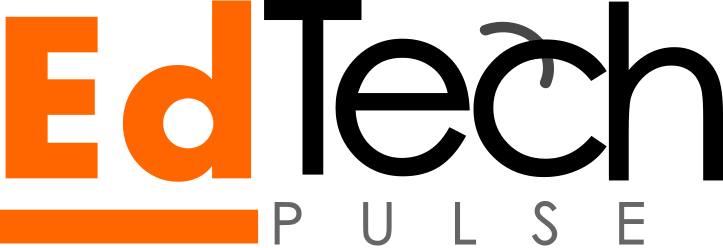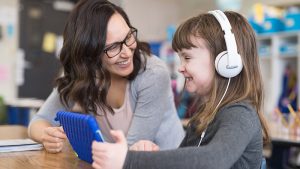A Digital Revolution or Just Digital Hype?
In classrooms across the globe, tablets replace textbooks, apps supplement lesson plans, and virtual simulations breathe life into abstract concepts. From AI-powered tutors to immersive VR field trips, educational technology (EdTech) is reshaping how we teach and learn. But one crucial question lingers: is this digital wave improving actual learning outcomes—or just changing the delivery?
While the adoption of EdTech continues to soar, educators, policymakers, and parents are asking: does it make students smarter, more critical thinkers, or better prepared for life beyond school? This article critically explores the impact of EdTech on academic performance, real-world readiness, and cognitive development, unpacking the evidence and examining where digital tools excel—and where they fall short.
The Promise of EdTech: Innovation with Intention
First, we must begin with the promise of educational technology, and the need it seeks to provide for. EdTech emerged as a response to traditional education’s inefficiencies—rigid curricula, overcrowded classrooms, and rote learning. By offering personalization, engagement, and access to global resources, it promised to revolutionize learning.
Potential Benefits:
Without doubt, Edtech brings so much benefits to traditional educational methods as outline below
- Personalized Learning: Platforms like Khan Academy adapt to individual pace and proficiency.
- Interactive Engagement: Gamified apps and simulations help increase motivation and retention.
- Access and Inclusion: Digital tools help bridge education gaps in remote or underserved areas.
- Data-Driven Instruction: Real-time analytics allow teachers to adjust strategies instantly.
However, the presence of technology does not inherently guarantee improved learning.
Measuring the Impact: What the Data Actually Says

EdTech advocates often tout increased engagement and accessibility, but does that equate to better learning outcomes? Let’s look at outputs of edtech and traditional education system on various metrics such as academic performance, critical thinking, etc; and see what the data says.
a. Academic Performance:
- A 2020 meta-analysis by the Organisation for Economic Co-operation and Development (OECD) showed that students using computers moderately at school had slightly better learning outcomes, but overuse correlated with lower performance. Link to research resource: https://www.oecd.org/content/dam/oecd/en/publications/reports/2020/11/education-policy-evaluation_9832a42b/9f127490-en.pdf
- Evidence from countries like South Korea and Finland suggests a mixed bag—where tech improves outcomes only when integrated with pedagogically sound methods.
b. Critical Thinking and Problem Solving:
- Tools like coding platforms or project-based learning apps can foster problem-solving skills.
- However, overreliance on scripted EdTech tools may inhibit independent thinking if not complemented with inquiry-based instruction.
c. Real-World Readiness:
- Tools like LinkedIn Learning, Coursera, and Google Workspace are better aligned with workplace expectations than many traditional classrooms.
- However, critical soft skills—communication, collaboration, leadership—still require human-centered teaching.
Where EdTech Excels
Besides perceived shortcomings, edtech excels at various aspects of the education process, and impacts learning in a way that makes it an invaluable tool.
a. Special Education and Differentiated Instruction:
- Speech-to-text tools, AR/VR for dyslexia intervention, and visual learning aids have been game-changers for students with special needs.
b. STEM Education:

- Platforms like PhET simulations, Tinkercad, and Scratch offer hands-on, visual experimentation opportunities that deepen understanding.
c. Flipped Classrooms:
- Studies have shown that students in flipped classrooms—where instruction happens online and practice happens in class—tend to perform better than those in traditional models.
d. Teacher Empowerment:

- AI-based platforms like Century Tech support teachers in tailoring lessons based on performance data, saving time and increasing effectiveness.
Where EdTech Falls Short
a. Tech Without Pedagogy: Simply giving students tablets doesn’t improve outcomes. Without curriculum integration and teacher training, tech becomes a distraction.
b. Socioeconomic Inequity: Digital divides persist. Many students in rural or underfunded areas lack access to devices, internet, or even electricity.
c. Screen Time and Mental Health: Excessive use of screens, especially unsupervised, can impair attention span, cause eye strain, and hinder social interaction.
d. Data Privacy and Security: Student data is increasingly collected through EdTech tools, raising concerns about surveillance, consent, and data misuse.
Aligning EdTech with Learning Objectives
a. Needs-Based Tool Selection:
- Schools should start with learning goals, not gadgets. If the objective is to improve writing skills, then a collaborative platform like Google Docs might be more effective than a flashy app.
b. Integration with Pedagogical Models:
- Use of Bloom’s Taxonomy, Universal Design for Learning (UDL), and constructivist models can guide how and when tech tools are used.
c. Ongoing Teacher Training:
- Professional development should focus not only on tool usage but also on pedagogy and data interpretation.
d. Feedback Loops:
- Schools should evaluate EdTech tools regularly using assessment results, teacher feedback, and student performance.
Case Studies: Evidence in Action
Let us consider some real-world example, and how some practical implementations has faired.
a. Rwanda’s One Laptop per Child (OLPC): While noble in intent, the initiative saw limited improvement in learning outcomes due to lack of teacher training and curriculum integration.
b. Estonia’s Digital Education Model: With comprehensive teacher training and curriculum-aligned tools, Estonia has become a model for digital transformation in education.
c. Bridge International Academies (Africa): Utilizes handheld tablets and scripted lessons for low-income schools, achieving measurable improvements in literacy and numeracy scores.
Recommendations for Stakeholders
a) For Schools and Educators:
For schools and educators, the key to meaningful EdTech integration lies in adopting a pedagogy-first, technology-second approach. Rather than chasing the latest digital trends, the focus should be on how technology can enhance proven teaching methods. Investing in continuous digital skills training for teachers is essential, as educators are the bridge between technology and learning outcomes. Additionally, incorporating regular feedback from students on the effectiveness of digital tools ensures that the technology being used genuinely supports engagement, comprehension, and growth in the classroom.
b) For EdTech Companies:
EdTech companies must move beyond flashy features and prioritize tools that deliver measurable learning outcomes. This means designing solutions that are intuitive for both teachers and students, grounded in sound pedagogical practices, and adaptable to diverse learning contexts. Collaboration with educators during product development can lead to tools that are not only functional but genuinely impactful in the classroom. More importantly, companies should commit to rigorous testing and transparent reporting of performance data to ensure their solutions are making a real difference in education.
c) For Governments and Policymakers:
Governments and policymakers play a critical role in setting the tone for effective EdTech adoption. By establishing national standards for digital learning outcomes and ensuring that data-driven evaluations guide procurement decisions, they can help schools invest wisely. Public investment in infrastructure—such as broadband connectivity and access to devices—is foundational, but it must be matched with sustained funding for teacher training and digital literacy programs. Equally vital is creating accountability frameworks that assess not just usage, but impact, ensuring that technology in schools leads to tangible improvements in student achievement and readiness.
Moving Beyond the Screen
EdTech holds tremendous promise, but only when used purposefully. It’s not about flashy apps or digital dashboards; it’s about outcomes. The focus must return to the core question:
Are students learning better, thinking deeper, and becoming more equipped for life outside the classroom?
To answer that, we must measure impact, listen to teachers, and prioritize real-world skills. The goal is not just to digitize education but to humanize it—using technology as a means, not an end.





